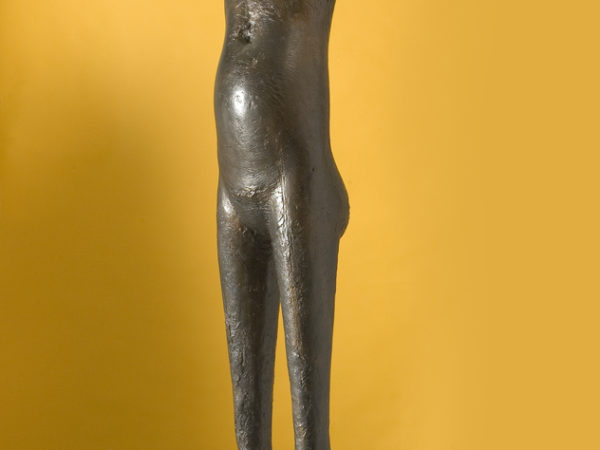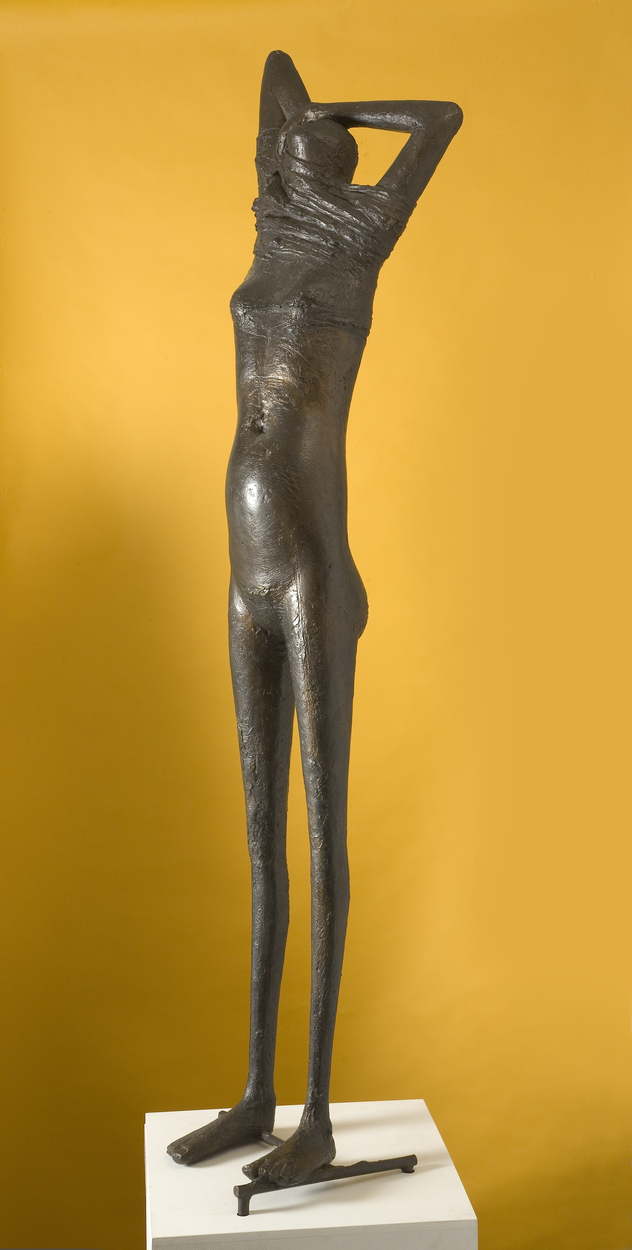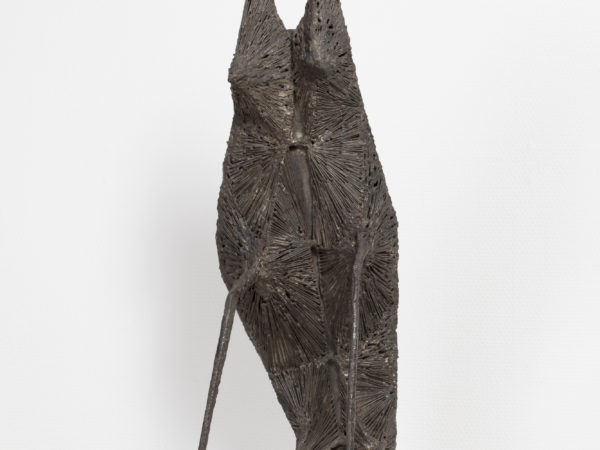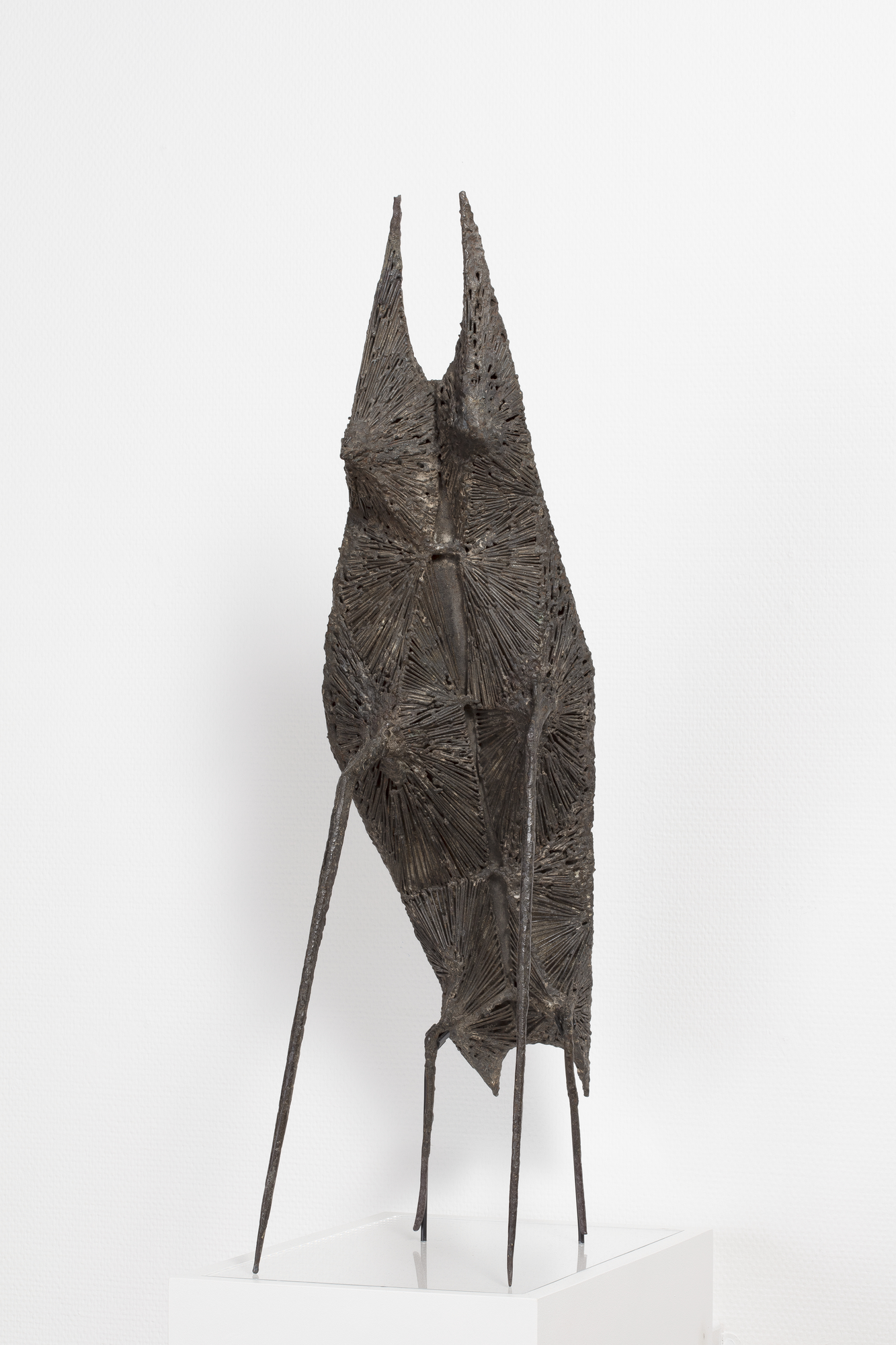Notes on techniques and terms
Carving, ‘truth to materials’
In the 20th century there was a revival of the art of carving. This happened in reaction to the casting of the 19th century and a view that this was somehow a ‘replica’ rather than the real thing. It was also connected with the desire for authenticity and crafting skill of the Arts and Craft movement. At the same time a whole generation, including Henry Moore and Barbara Hepworth, was becoming acquainted with the different varieties of wood and stone they could carve in and in the relationship between the material and the landscape. Artists including Jacob Epstein, Frank Dobson and Henri Gaudier-Brzeska were interested in both techniques, while most of the artists in this exhibition practised modelling and casting.
Casting
The artist makes a model, either in clay or plaster. A mould is made from the model, usually in plaster. At a foundry molten liquid metal, usually bronze, is poured into the mould. When the bronze cools and solidifies the hollow cast is ready.
Lost wax casting
A wax model is made, and a mould of plaster and broken pottery surrounds it. The mould is fired and the wax is ‘lost’.
Hot-shaping
Hot-shaping takes place with molten metal on an anvil using tools such as a hammer. Reg Butler had trained as a blacksmith and was highly skilled at this technique, as well as welding.
Welding
Welding applies naked heat to metal sections to fuse them together. This was a technique that Picasso learnt from Julio Gonzales, and Lynn Chadwick learnt at Cricklewood.
World art
Today we describe museum collections of historic art from beyond Europe as World Cultures. These include the kinds of sculptures that Jacob Epstein, and nearly all the modernist artists in the exhibition, viewed and admired in the British Museum and elsewhere. Epstein was a voracious collector and after his death left some 1000 pieces, many of which are now in museums themselves. In Epstein’s time these works were described as ‘primitive’ or even ‘savage’. This reflects the overtly racist attitudes of the time and it’s interesting to note the harsh criticism that Epstein received for his work that was based on concerns about Epstein’s use of the forms of non-Western cultures in connection with the frank nudity of his figures.
Today we would also ask questions about exoticism and appropriation. That is even before we consider consider the colonial history that led such objects to be in our museums and private collections at all.
Selected bibliography
Bibliography
Alan Bowness, Lynn Chadwick, Methuen, London, 1962
Alan Bowness and Penelope Curtis, Bernard Meadows, Sculpture and Drawings, Henry Moore Foundation, Lund Humphreys, 1995
Kenneth Armitage interview National Sound Archive Artists’ Lives, John McEwan and Tamsyn Woollcombe
Richard Calvocoressi et al, Reg Butler, Tate, London, 1983
Andrew Causey, Sculpture since 1945, Oxford History of Art, 1998
Penelope Curtis, Sculpture 1900-1945, Oxford History of Art, 1999
HS (Jim) Ede, Savage Messiah, A Biography of Henri Gaudier-Brzeska,1931, Gordon Fraser, London reprint, 1971
Ann Elliott, (Ed.), Kenneth Armitage, Sculptor, A Centenary Celebration, Sansom & Company, Bristol, 2016
Albert E Elsen, Pioneers of Modern Sculpture, Hayward Gallery, Arts Council, London, 1973
Dennis Farr, Lynn Chadwick Tate retrospective, London, 2004
Margaret Garlake, The Sculpture of Reg Butler, Henry Moore Foundation 2006
Robert Hopper, Frank Dobson, True and Pure Sculpture, Kettle’s Yard, Cambridge, 1981
Neville Jason and Lisa Thompson Pharoah, The Sculpture of Frank Dobson, Henry Moore Foundation, Lund Humphreys, 1994
PJ Kavanagh, Ralph Brown, Sculpture and Drawings, Archer Gallery , London, 1972
Rungwe Kingdon et al, Ralph Brown, A Memorial Exhibition, Pangolin, London, 2014
Sandy Nairne and Nicholas Serota, (Eds.), British Sculpture in the Twentieth Century, Whitechapel Art Gallery, London, 1981
Jennifer Powell, (Ed), New Rhythms: Henr Gaudier-Brzeska, Kettle’s Yard, Cambridge, 2015
Herbert Read, The British Pavilion, XXVI Biennale, Venice, 1952 (exhibition catalogue).
Herbert Read, Modern Sculpture, A Concise History, Thames and Hudson, 1964, reprinted 2001
Siegfrid Salzman, Wilhelm Lehmbruck, 1979
Evelyn Silber and Terry Friedman, Jacob Epstein: Sculpture and Drawings, Leeds, Whitechapel, 1987
Chris Stephens, The Sculpture of Hubert Dalwood, Henry Moore Foundation, Lund Humphreys, 1999
Alexander Sturgis, Presence: The Art of Portrait Sculpture, the Holburne, Bath, Antique Collectors Club, 2012
Calvin Winner, (Ed.), Elisabeth Frink: Humans and Other Animals, Sainsbury Centre for Viusal Arts, University of East Anglia, 2018
Rosemary Young interviewed by Gillian Whiteley, National Sound Archive, Artists’ Lives









